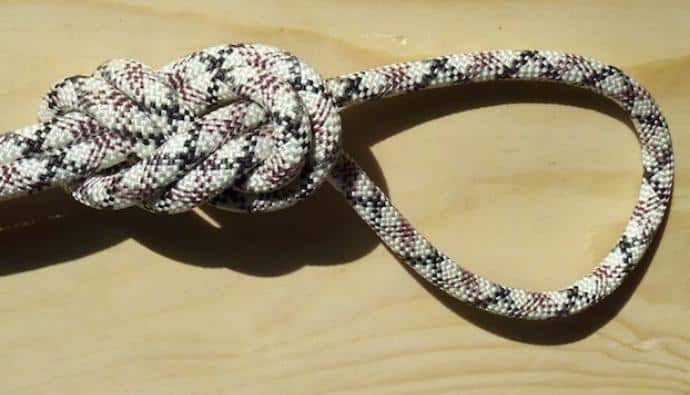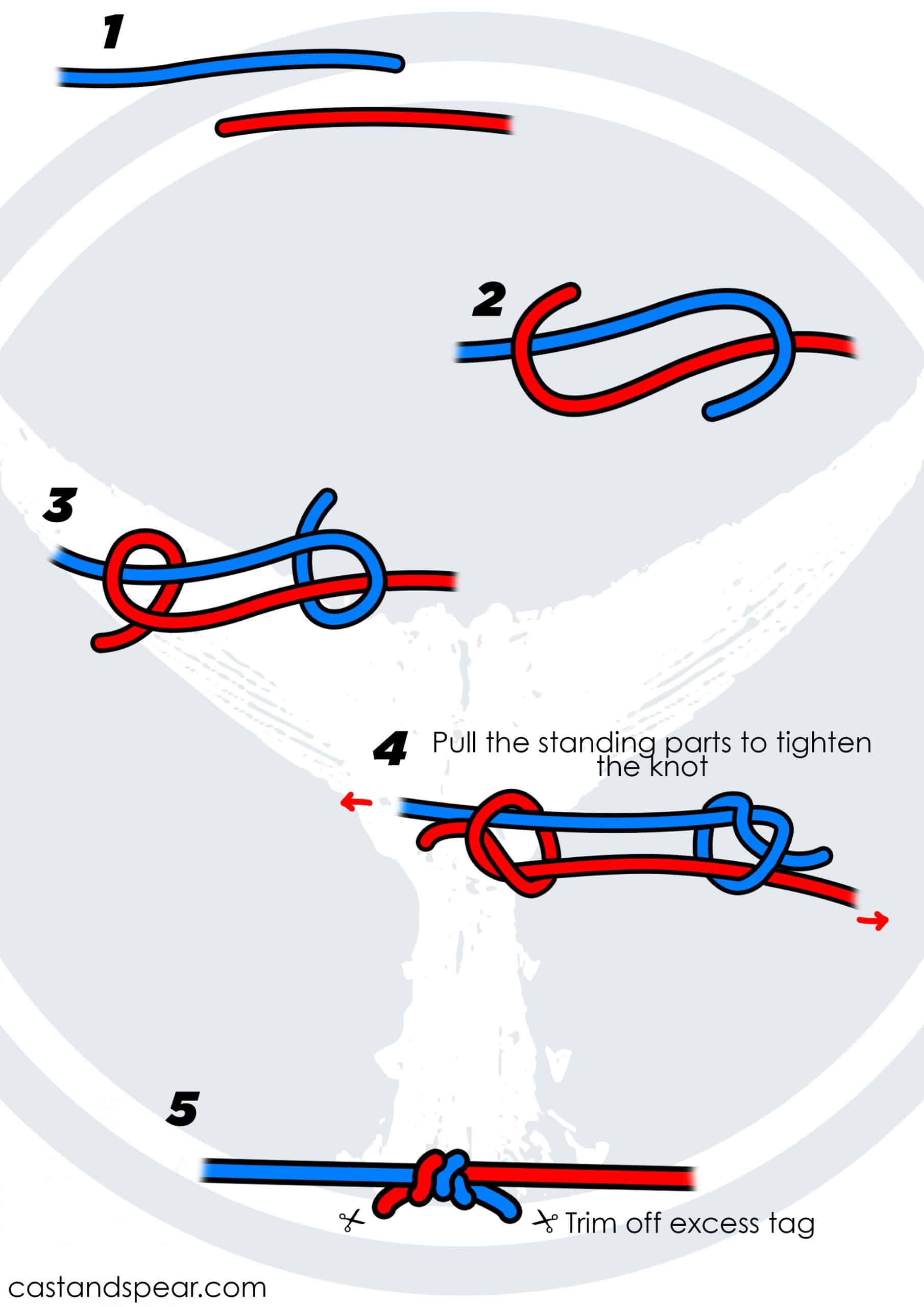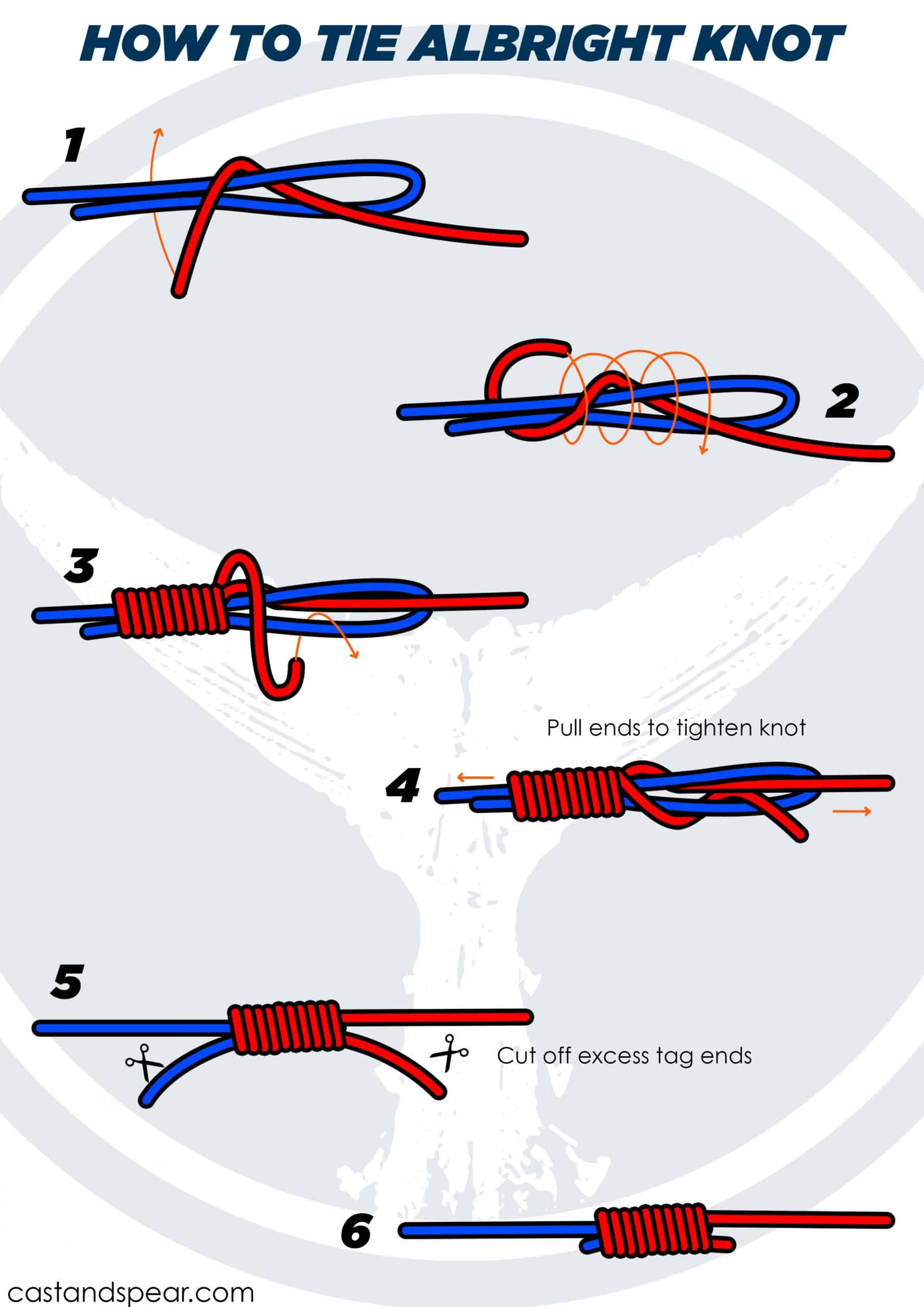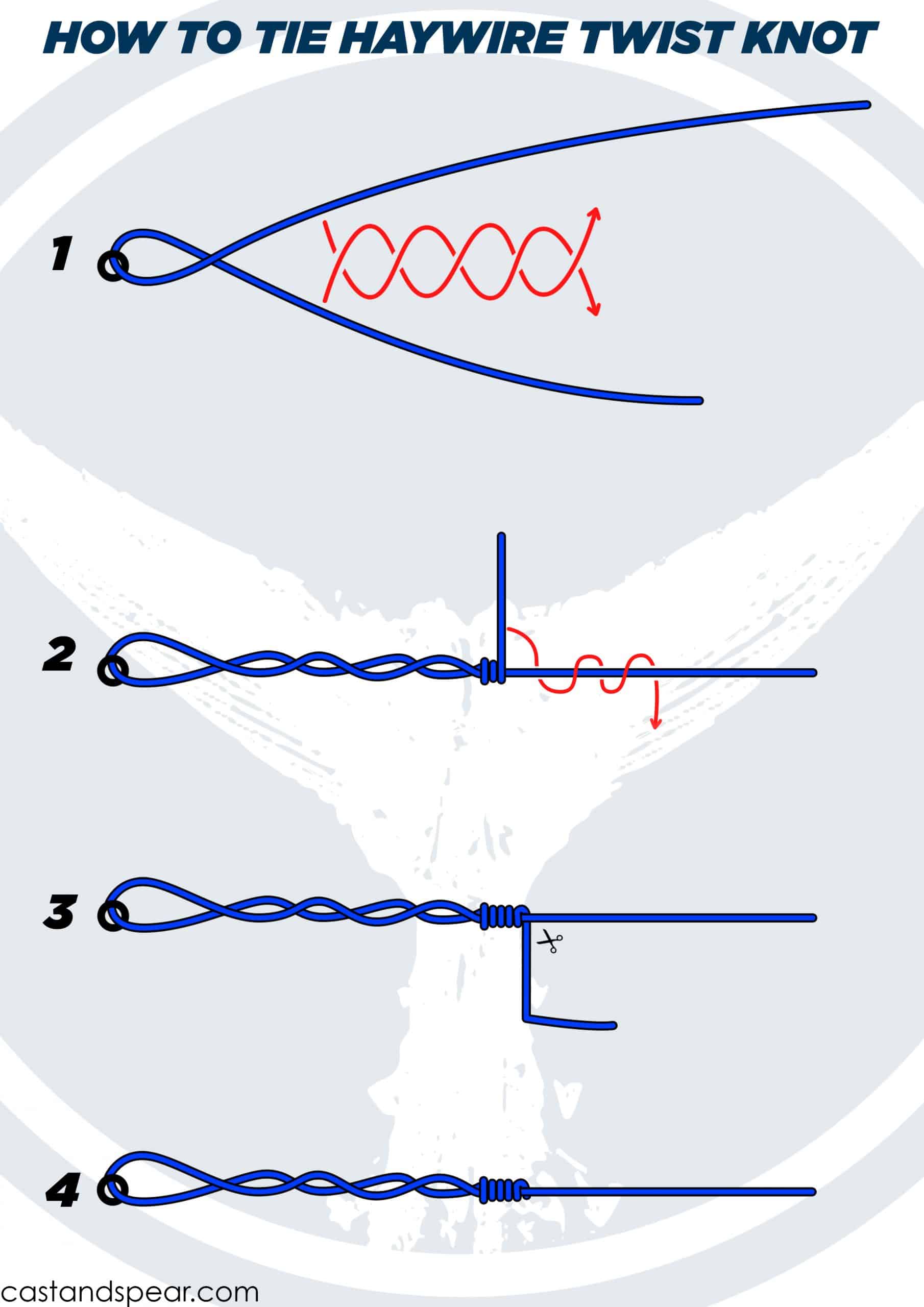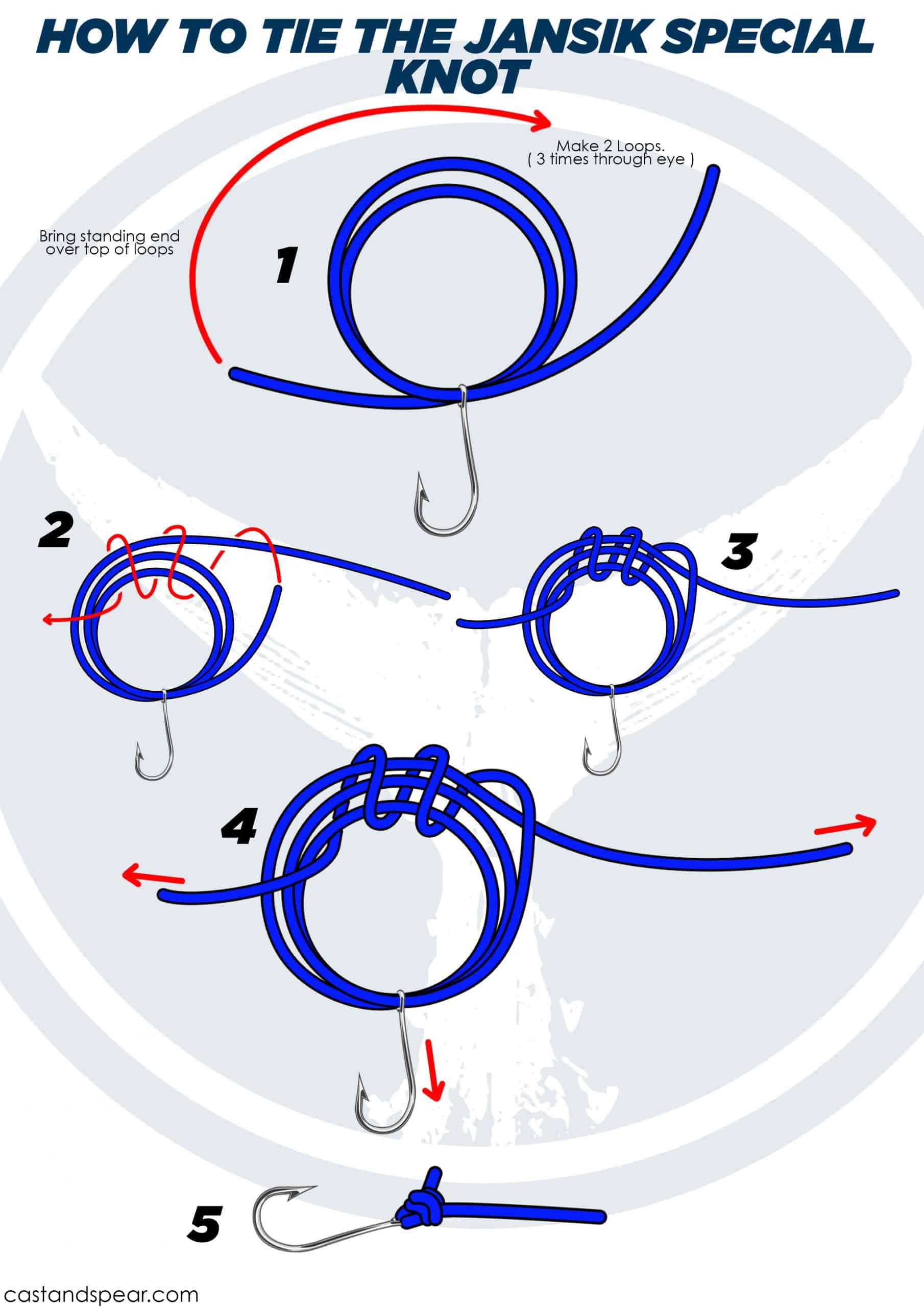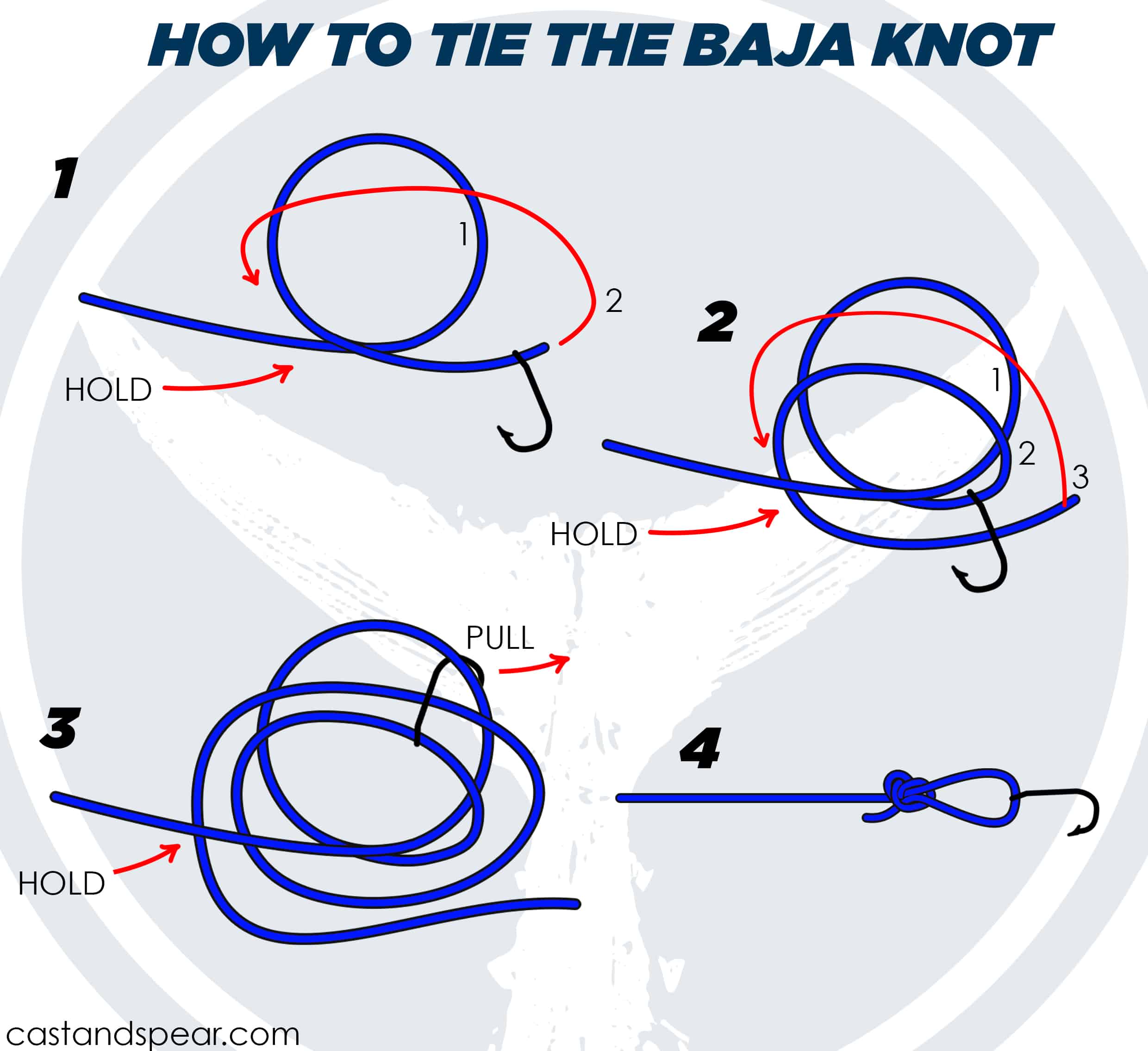The John Collins Knot is one of my favorites for connecting monofilament or fluorocarbon to spectra (braid). It’s also known as the Royal Polaris Knot (RP Knot).
It might not be as strong as the FG Knot, but where it lacks in strength, it makes up for in speed and ease of tying. Most of the experienced fishermen here in Southern California use this fish for all their saltwater game without much complaint.
I was turned on to this knot by my buddy Sam who’s been slaying Southern California and into Baja for decades. When I asked him if he knew how to tie the FG, he said that he hadn’t been using that one for years and said to learn the Collins since that’s what even the tuna guys were using.
Thankfully, there are plenty of videos from John Collins himself to show how to make this secure connection, although, in a video, he prefers you call it the RP. Some fishermen refer to this instead as an Alberto or modified Albright, but it doesn’t matter the name as long as you know it’s a reliable option for most of your saltwater situations.
Tying the John Collins Knot

- Make a loop in the monofilament.
- Take your braid and drop it down through the loop and pinch the fluoro/mono leader with your finger and thumb.
- Wrap the braid five wraps down the fluoro/mono, then pinch it with your finger and thumb.
- Wrap the braid five wraps up, making a helix shape until you reach the original loop.
- Place the braid through the top or bottom of the loop (it doesn’t matter).
- Take the tag end and mainline of the braid, and the tag end and mainline of fluoro/mono, and pull them until the knot is just starting to form.
- Release the tag ends of fluoro/mono and braid while holding the other two lines.
- Moisten with saliva or water.
- Please give it a quick jerk in opposite directions to lock down the knot.
- Trim the tag ends up close to the knot.
- Roll the knot a few times between your fingers if you want.
Tips for Tying the RP Knot
- The secret to the John Collins fishing knot comes in the jerk motion to lock down the knot. This isn’t a knot that should be pulled super slow all the way through. You want to pull slowly until the knot is about 85% of the way cinched down, then moisten it. Then in one quick action, pull the non-tag-ends tight with stable force, and you’ll see the knot squish down.
- Since the knot won’t get any tighter than that final size, you can cut the tag ends down nearly flush with the knot to give it a low profile. This will help it pass through the guides if you have a more extended top shot.
- I have used this for tying mono to fluoro without issue. However, since mono is thicker than braid, it does form quite a significant bump in the line. John Collins recommends that you use the Surgeons wrapped three times instead of the RP if you aren’t using a braid.
- You don’t need to use more than five wraps of your thread up and down your mono or fluoro. Some people recommend using seven wraps, but John Collins has said numerous times that it’s not going to add extra value with the extra wraps in the threads.
Uses
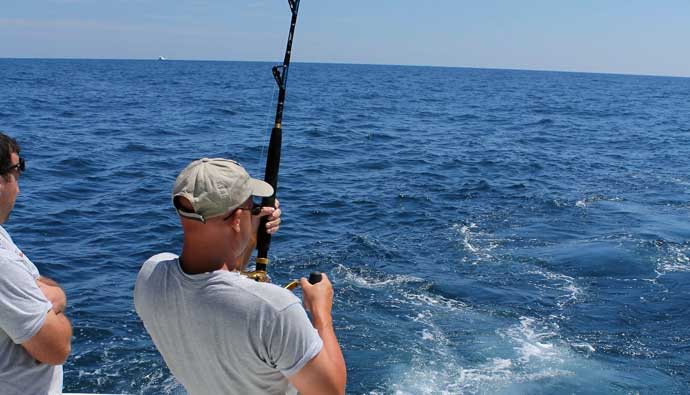
- This is a low-profile knot for tying monofilament or fluorocarbon leader to braid. This is popular on the boat for saltwater fishing and can be used for small to large fish.
- If you’re on the boat and you’re going after big fish, then this needs to be a connection that you are comfortable with, and you spend some time perfecting at home. Whether you’re using a thick piece of mono or a thin piece of fluoro, your leader will benefit from this connection.
- You can even use this during your freshwater trips on light mono and fluoro lines. It should work just the same, but you do have the option of doing a few more wraps of the thread since the diameter of the line is so small.
Advantages
- The John Collins Knot is a small and robust profile knot.
- It’s quick to tie without any complicated steps.
- You can cut the tag ends down low, which makes it easier to pass through your rod guides.
Disadvantages
- It’s not as strong as the FG Knot and a few other knots that are more complicated to tie.
- The FG has a slimmer profile, which means it’ll travel through your guides a bit easier, which can be a plus if you decide to have a really great top shop or, for whatever reason, you need your connection to pass from the reel through the guides. More time tying means less time that your bait or lure is in the water, which translates into fewer fish :).
Alternatives
- Triple Surgeon’s Knot – If you are not using spectra, then you can tie your leader with a triple Surgeon’s Knot, and it’ll hold just fine. It’s a little bulkier of a knot, so it should go through any of your guides.
- FG Knot – This is one of the most muscular knots out there, and it can take some practice to learn how to tie. It’s also a low-profile knot.
- Uni-to-Uni Knot – This one is easy to tie and isn’t the slimmest knot. Make sure you don’t have it pass through your rod guides.
- Albright Knot – Sometimes, it’s easy to confuse Albright Knots with the RP Knot since they are roughly the same motions to tie. However, if you look closely, the Albright uses wraps ten times and needs to enter the same side through the loop. Both are solid knots, but we believe the RP Knot is a bit more robust.
Frequently Asked Questions
The most reliable fishing knot would have to be the FG Knot. However, you should know that an improperly tied knot is a weak knot, no matter which one you choose. Only use a knot that you are sure is tied correctly, and if you need to, ask for someone to help.
If we are not talking fishing, then the most reliable knot would likely be the 8-follow-through knot, which is commonly used in rock climbing to keep someone from falling to their death. You can tie this with your mono if you want, but there are better knots out there that will do the job better.
It depends on the application, but if you want to fasten your hook or lure to the end of your braided line, then you should try the double or triple Palomar knot. This super strong knot will lock down nicely with the thinner and slipperier braid.





 Facebook
Facebook YouTube
YouTube